Culture of Vietnam
The culture of Vietnam is one of the oldest in Southeast Asia, with the ancient Bronze age Đông Sơn culture being widely considered one of its most important progenitors.[1][2] Due to 1000 years of Chinese rule, Vietnamese culture was heavily influenced by Chinese culture in terms of politics, government, social and moral ethics, and art. Vietnam is considered to be part of the East Asian cultural sphere.[3]
.jpg)
| Part of a series on the |
| Culture of Vietnam |
|---|
| History |
| People |
| Languages |
| Cuisine |
| Festivals |
| Literature |
|
Music and performing arts |
|
Media
|
| Sport |
|
Monuments |
|
Symbols
|
|
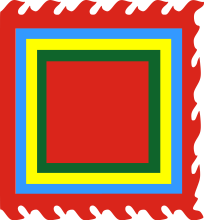
Following independence from China in the 10th century, Vietnam began a southward expansion that saw the annexation of territories formerly belonging to the Champa Civilization (now Central Vietnam) and parts of the Khmer Empire (now Southern Vietnam), which resulted in minor regional variances in Vietnam's culture due to exposure to these different groups.
During the French colonial period, Vietnamese culture absorbed various influences from the Europeans, including the spread of Catholicism and the adoption of the Latin alphabet.[4] Prior to this, Vietnamese had used both Chinese characters and a script called Chữ Nôm which was based on Chinese but included newly invented characters to represent native Vietnamese words.
In the socialist era, the cultural life of Vietnam has been deeply influenced by government-controlled media and the cultural influences of socialist programs. For many decades, foreign cultural influences from the Western World were shunned, and emphasis was placed on sharing the culture of communist nations such as those in the Soviet Union, Cuba, China, and others.
Some elements generally considered to be characteristic of Vietnamese culture include ancestor veneration, respect for community and family values, handicrafts and manual labour, and devotion to study. Important symbols present in Vietnamese culture include dragons, turtles, lotuses, and bamboo.
Kinship
In Vietnamese culture, kinship plays an important role in Vietnam. Whilst Western culture has an emphasis on individualism, Eastern culture has a higher emphasis on family members, with each family member given a title signifying relative age and gender. In observing farming communities of Vietnam, the essence of clanship is still retained. This fact is seen in village names such as Đặng Xá (place for the Đặng clan), Châu Xá, Lê Xá, etc. In the Western highlands, the tradition of many families in a clan residing in a longhouse also exists. The majority of rural Vietnam consists of multi-generational families living under one household.
Marriage
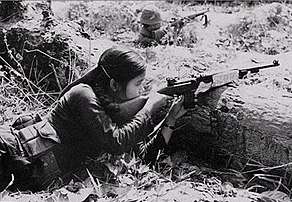
The traditional Vietnamese wedding is one of the most important traditions in Vietnamese occasions. Regardless of Westernization, many of the age-old customs practiced in a traditional Vietnamese wedding continue to be celebrated by both Vietnamese in Vietnam and overseas, often combining both Western and Eastern traditions.
In the past, both men and women were expected to be married at young ages. Some mountainous places exists "Tao Hon" because one of the couples are too young to get married just 13 or 14 years old. Marriages called contractual marriages were generally arranged by the parents and extended family, with the children having limited input on the matter. In modern Vietnam, this has changed, as people freely choose their own marriage partners.[5]
Generally there are two main ceremonies:[5]
- Lễ đám hỏi (betrothal (engagement ceremony): Some time before the wedding, the groom and his family visit the bride and her family with round lacquered boxes known as betrothal presents. The quantity of boxes must be an odd number. The presents include areca nuts, betel leaves, tea, cake, fruits, wine, other various delicacies and money. The presents are covered with red paper or cloth, and they are carried by unmarried girls or boys. Both families agree to pick a good date for the wedding.
- Lễ cưới (wedding ceremony): On the wedding day, the groom's family and relatives go to the bride's house to ask permission for the groom to marry and take his bride to his house. Guests would be invited to come and celebrate the couple's marriage. The couple pray before the altar asking their ancestors for permission for their marriage, then to express their gratitude to both groom's and bride's parents for raising and protecting them.
Funeral ceremony
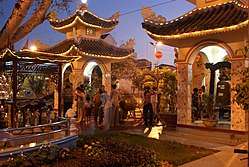
Wake
When a person passes away in Vietnam, the surviving family holds a wake ceremony or vigil that typically lasts about five to six days, but may last longer if the surviving family is waiting for other traveling relatives. The body is washed and dressed. A le ngam ham, or chopstick, is laid between the teeth and a pinch of rice and three coins are placed in the mouth. The body is put on a grass mat laid on the ground according to the saying, "being born from the earth, one must return back to the earth." The dead body is enveloped with white cloth, lễ khâm niệm, and placed in a coffin, lễ nhập quan. Finally, the funeral ceremony, lễ thành phục, is officially performed.
Funeral
The surviving family wear coarse gauze turbans and tunics for the funeral. There are two types of funeral processions:
- Traditional: The date and time for the funeral procession, lễ đưa tang, must be carefully selected. Relatives, friends, and descendants take part in the funeral procession to accompany the dead along the way to the burial ground. Votives are dropped along the way. At the grave site, the coffin is lowered and buried. After three days of mourning, the family visits the tomb again, le mo cua ma, or worship the opening of the grave. After 49 days, le chung thất, the family stops bringing rice for the dead to the altar. And finally, after 100 days, the family celebrates tốt khốc, or the end of the tears. After one year is the ceremony of the first anniversary of the relative's death and after two years is the ceremony of the end of mourning.
- Modern: Nowadays, mourning ceremonies follow new rituals which are simplified; they consist of covering and putting the dead body into the coffin, the funeral procession, the burial of the sike into the grave, and the visits to the tomb.
In Vietnam, after 100 days of them passing away, the family of the deceased undergo a ritual in which the whole family sits in pairs in a long line up to a single member of the family. A monk (thầy cúng) places a thin piece of cotton over the family member's head and ring a bell and chant while rotating the bell around the deceased's head, sending them into a trance and opening a way for the deceased to return to the living. A bamboo tree with only leaves on the top with small pieces of paper with the deceased's name written on them starts to wave when the deceased is coming. They believe that after 100 days the deceased may return to this realm and "possess" the body of the member of the family undergoing the ritual and once it is completed the other members of the family can communicate with the spirit of the deceased through the tranced family member.
This ritual takes all day to prepare and then as long as six hours praying and chanting, changing the family member at the front of the line. Afterwards they then burn a paper house and paper-made possessions (that which the deceased would have loved during his/her life) so that they may take it through to their next life with them.
Religion and philosophy
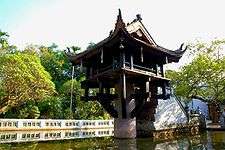
Religion in Vietnam has historically been largely defined by a mix of Buddhism, Confucianism, and Taoism, known in Vietnamese as the Tam Giáo ("triple religion").[6] Catholicism is also practiced in modern Vietnam.[7]
Ancestor worship and filial piety is commonly practised amongst the older generation of Vietnamese. Most Vietnamese, regardless of religious denomination, practice ancestor worship and have an ancestor altar at their home or business.[8]
Literature

Vietnamese literature includes two major components: folk literature and written literature. The two forms developed simultaneously and are profoundly interrelated.
Vietnamese folk literature came into being very early and had a profound effect on the spiritual life of the Viet. The folk literature contributed to the formation of Vietnam's national identity with praising beauty, humanism, and the love of goodness. Legends, fairy tales, humorous stories, folk songs, and epic poems have a tremendous vitality and have lived on until today.
Written literature was born roughly in the 10th century. Up until the 21st century, there had been two components existing at the same time: works written in the Han characters (with poems and prose demonstrating the. Vietnamese soul and realities; thus, they were still regarded as Vietnamese literature) and works written in the Nom character (mostly poems; many great works were handed down to the later generations).
Since the 1920s, written literature has been mainly composed in the National language with profound renovations in form and category such as novels, new-style poems, short stories and dramas, and with diversity in artistic tendency. Written literature attained speedy development after the August Revolution, when it was directed by the Vietnamese Communist Party's guideline and focused on the people's fighting and work life.
Modern Vietnamese literature has developed from romanticism to realism, from heroism in wartime to all aspects of life, and soared into ordinary life to discover the genuine values of the Vietnamese.
Classical literature generated such masterpieces as Truyen Kieu (Nguyễn Du), Cung Oán Ngâm Khúc (Nguyễn Gia Thiều), Chinh Phu Ngam (Dang Tran Con), and Quoc Am Thi Tap (Nguyễn Trãi). Some brilliant female poets are Hồ Xuân Hương, Doan Thi Diem, and Bà Huyện Thanh Quan.
Poetry
Historically, Vietnamese poetry has a three language tradition. Early poetry was written exclusively in Classical Chinese, later incorporating Sino-Vietnamese vocabulary, and often focused on Confucian tradition and Buddhist themes.[9][10] This style of poetry was most prominent until the 13th century. After this, poetry and literature in the Vietnamese language became the main competitor of literature written in the Classical Chinese language. The Chữ Nôm writing system for the Vietnamese language was adapted for poetry in Vietnamese, this was sanctioned by the government and as the countries primary language. [11]This was the main language in poetry until the end of the 20th century. This was then changed by Romanized script translated from the Europeans whilst invading the country (known as Quoc Ngu).[12] This meant that translated poems got somewhat lost in translation.[13] Vietnam has had a diverse range of cultural poetry throughout history.[14]
Visual arts
Traditional Vietnamese art is a part of art practiced in Vietnam or by Vietnamese artists, from ancient times (including the elaborate Đông Sơn drums) to post-Chinese domination art which was strongly influenced by Chinese Buddhist art, as well as Taoism and Confucianism. The art of Champa and France also played a smaller role later on.
The Chinese Arts's influence on Vietnamese art extends into Vietnamese pottery and ceramics, calligraphy, and traditional architecture. Currently, Vietnamese lacquer paintings have proven to be quite popular.
Calligraphy
Calligraphy has had a long history in Vietnam, previously using Chinese characters along with Chữ Nôm. However, most modern Vietnamese calligraphy instead uses the Roman-character based Quốc Ngữ, which has proven to be very popular.
In the past, with literacy in the old character-based writing systems of Vietnam being restricted to scholars and elites, calligraphy nevertheless still played an important part in Vietnamese life. On special occasions such as the Lunar New Year, people would go to the village teacher or scholar to make them a calligraphy hanging (often poetry, folk sayings or even single words). People who could not read or write also often commissioned at temple shrines.
Silk painting

Vietnamese silk painting is one of the most popular forms of art in Vietnam, favored for the mystical atmosphere that can be achieved with the medium. During the 19th and 20th centuries, French influence was absorbed into Vietnamese art and the liberal and modern use of color especially began to differentiate Vietnamese silk paintings from their Chinese, Japanese and Korean counterparts.[15] Vietnamese silk paintings typically showcase the countryside, landscapes, pagodas, historical events or scenes of daily life.
Woodblock prints

A folk art with a long history in Vietnam, Vietnamese woodblock prints have reached a level of popularity outside of Vietnam.[16] Organic materials are used to make the paint, which is applied to wood and pressed on paper. The process is repeated with different colors.
Performing arts
Music

Vietnamese music varies slightly in the three regions: Bắc or North, Trung or Central, and Nam or South. Northern classical music is Vietnam's oldest and is traditionally more formal. Vietnamese classical music can be traced to the Mongol invasions, when the Vietnamese captured a Chinese opera troupe. Central classical music shows the influences of Champa culture with its melancholic melodies. Southern music exudes a lively laissez-faire attitude.
Vietnam has some 50 national music instruments, in which the set of percussion instruments is the most popular, diverse and long-lasting such as đàn đáy, đàn tranh, đàn nhị, đàn bầu ... The set of blowing instruments is represented by flutes and pan-pipes, while the set of string instruments is specified by dan bau and dan day.
Vietnamese folksongs are rich in forms and melodies of regions across the country, ranging from ngâm thơ (reciting poems), hát ru (lullaby), hò (chanty) to hát quan họ, trong quan, xoan, dum, ví giặm, ca Huế, bài chòi, ly. Apart from this, there are also other forms like hát xẩm, chầu văn, and ca trù.
Two of the most widely known genres are:
- Imperial Court music: When referring specifically to the "Nhã nhạc" form it includes court music from the Trần dynasty on to the Nguyễn dynasty. It is an elaborate form of music which features an extensive array of musicians and dancers, dressed in extravagant costumes. It was an integral part of the rituals of the Imperial court.
- Ca trù: An ancient form of chamber music which originated in the imperial court. It gradually came to be associated with a geisha-type of entertainment where talented female musicians entertained rich and powerful men, often scholars and bureaucrats who most enjoyed the genre. It was condemned in the 20th century by the government, being tied falsely with prostitution, but recently it has seen a revival as appreciation for its cultural significance has grown. Ca trù has been recognized by UNESCO as a Masterpiece of the Oral and Intangible Heritage of Humanity since 2005.
In the 20th century, in contact with the Western culture, especially after national independence, many new categories of arts like plays, photography, cinemas, and modern art had taken shape and developed strongly, obtaining huge achievements with the contents reflecting the social and revolutionary realities. Up to 1997, there have been 44 people operating in cultural and artistic fields honored with the Ho Chi Minh Award, 130 others conferred with People's Artist Honor, and 1011 people awarded with the Excellent Artist Honor. At the start of 1997, there were 191 professional artistic organizations and 26 film studios (including central and local ones). There have been 28 movies, 49 scientific and documentary films receiving international motion picture awards in many countries.
Theatre
- Hát tuồng (also known as Hát bội): Traditional Vietnamese opera: A theatre form strongly influenced by Chinese opera, it transitioned from being entertainment for the royal court to travelling troupes who performed for commoners and peasants, featuring many well-known stock characters.
- Cải lương: A kind of modern folk opera originating in South Vietnam, which utilizes extensive vibrato techniques. It remains very popular in modern Vietnam when compared to other folk styles.
- Hát chèo: Chèo is a form of generally satirical musical theatre, often encompassing dance, traditionally performed by Vietnamese peasants in northern Vietnam. It is usually performed outdoors by semi-amateur touring groups, stereotypically in a village square or the courtyard of a public building, although it is today increasingly also performed indoors and by professional performers
Water puppetry
Water puppetry (Múa rối), is a distinct Vietnamese art form which had its origins in the 10th century and very popular in northern region. In Water puppetry a split-bamboo screen obscures puppets which stand in water, and are manipulated using long poles hidden beneath the water. Epic story lines are played out with many different puppets, often using traditional scenes of Vietnamese life. The puppets are made from quality wood, such as the South East Asian Jackfruit tree. Each puppet is carefully carved, and then painted with numerous successive layers of paint in order to protect the puppets.
Despite nearly dying out in the 20th century, water puppetry has been recognized by the Vietnamese government as an important part of Vietnam's cultural heritage. Today, puppetry is commonly performed by professional puppeteers, who typically are taught by their elders in rural areas of Vietnam.
Dance
Vietnam has 54 different ethnicities, each with their own traditional dance. Among the ethnic Vietnamese majority, there are several traditional dances performed widely at festivals and other special occasions, such as the lion dance.
In the imperial court, there also developed throughout the centuries a series of complex court dances which require great skill. Some of the more widely known are the imperial lantern dance, fan dance, and platter dance, among others.
Cinema
Communication
Communication in Vietnam, like other countries in the region, is indirect, based upon rapport and respect, and relies heavily on body language. Showing agreement by saying "yes" shows respect even if the person does not agree with what's being said. For example, one would say "yes" to an invitation even if one does not intend on attending. The individual would simply not attend. Breaking this rapport or disagreeing is deemed disrespectful. Face facial expression is crucial to Vietnamese, so they are usually very indirect with what they say and usually avoid stating their opinion in case they are wrong. It is considered to be polite if women speak softly when they talk. If they talk with a high volume in their speech, it is considered to be negative.[17] Children are unable to disagree with elders. Smiling is often used as an apology. Eye contact is usually avoided. Taboo things in western culture, such as asking about one's age or salary during an initial meeting, is normal. Storytelling is often used as a form of communication.[18][19][20]
Cuisine
Vietnamese cuisine is extremely diverse, often divided into three main categories, each pertaining to Vietnam's three main regions (north, central and south). It uses very little oil and many vegetables, and is mainly based on rice, soy sauce, and fish sauce. Its characteristic flavors are sweet (sugar), spicy (serrano pepper), sour (lime), nuoc mam (fish sauce), and flavored by a variety of mint and basil. . Vietnam also has a large variety of noodles and noodle soups. Different regions invented typically different types of noodles, varying in shapes, tastes, colors, etc. One of the nation's most famous type of noodles is phở (pronounced "fuh"), a type of noodle soup originating in North Vietnam, which consists of rice noodles and beef soup (sometimes chicken soup) with several other ingredients such as bean sprouts and scallions (spring onions). It is often eaten for breakfast, but also makes a satisfying lunch or light dinner. The boiling stock, fragrant with spices and sauces, is poured over the noodles and vegetables, poaching the paper-thin slices of raw beef just before serving. Phở is meant to be savored, incorporating several different flavors: the sweet flavour of beef, sour lemons, salty fish sauce, and fresh vegetables.
Hairstyle and teeth blackening
The Han Chinese referred to the various non-Han "barbarian" peoples of north Vietmam and southern China as "Yue" (Viet) or Baiyue, saying they possessed common habits like adapting to water, having their hair cropped short and tattooed. The Han also said their language was "animal shrieking" and that they lacked morals, modesty, civilization and culture.[21][22]
After the Ming conquest of Vietnam, Ming-style clothing was imposed by a Ming official within a month. Ming administrators said that their mission was to civilize the unorthodox Vietnamese barbarians.[23] The Ming dynasty wanted the Vietnamese to stop teeth blackening so that they could have white teeth like the Chinese.[24] A royal edict was issued by Vietnam in 1474 forbidding Vietnamese from adopting foreign languages, hairstyles and clothing of the Lao, Champa or the "Northerners" which referred to the Ming. The edict was recorded in the 1479 Complete Chronicle of Dai Viet of Ngô Sĩ Liên.[25]
The Vietnamese had adopted the Sinocentric view towards their surrounding neighbors such as the Chams and Cambodians. They consider them as barbarians and themselves as the Middle Kingdom (China).[26] By the Nguyen dynasty the Vietnamese themselves were ordering Cambodian Khmer to adopt Han culture by ceasing "barbarous" habits like cropping hair and ordering them to grow it long besides making them replace skirts with trousers.[27] Han Chinese Ming dynasty refugees numbering 3,000 came to Vietnam at the end of the Ming dynasty. They opposed the Qing dynasty and were fiercely loyal to the Ming dynasty. Vietnamese women married these Han Chinese refugees since most of them were soldiers and single men. Their descendants became known as Minh Hương and they strongly identified as Chinese despite influence from Vietnanese mothers. They did not wear Manchu hairstyle unlike later Chinese migrants to Vietnam during the Qing dynasty.[28]
Clothing
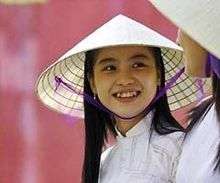

In feudal Vietnam, clothing was one of the most important marks of social status and strict dress codes were enforced.
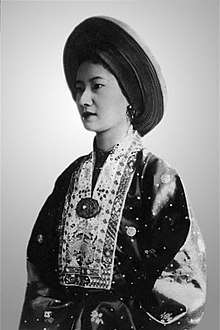
Prior to the Nguyễn dynasty, people not of noble birth could dress quite liberally with only few restrictions on styles. For example, wearing yellow color in the Lý dynasty was tolerable since the Imperial clan wore red and white color. However, things changed at the beginning of the Nguyễn dynasty. Commoners now had a limited choice of similarly plain and simple clothes for every day use, as well as being limited in the colors they were allowed to use. For instance, commoners were not allowed to wear clothes with dyes other than black, brown or white (with the exception of special occasions such as festivals), but in actuality these rules could change often based upon the whims of the current ruler.
The Áo giao lĩnh (襖交領) was a traditional cross-collared robe worn by Vietnamese before the 19th century. During the Nguyen dynasty, it was replaced by the áo dài and became obsolete.[29][30]
The Áo Tứ Thân or "four-part dress" is one such example of an ancient dress widely worn by commoner women, along with the Áo yếm bodice which accompanied it. Peasants across the country also gradually came to wear silk pajama-like costumes, known as "Áo cánh" in the north and Áo bà ba in the south.
The headgear differed from time to time. People of the Lý dynasty and Nguyễn dynasty often put on a plain piece of cloth wrapped around the head (generally called Khăn đóng), while in Trần dynasty and Lê dynasty leaving the head bare was more common. Beside the popular Nón Lá (conical hat), a vast array of other hats and caps were available, constructed from numerous different types of materials, ranging from silk to bamboo and horse hair. Even the Nón Lá (conical hat) used to take several different shapes and sizes, now only two styles still persist. For footwear peasants would often go barefoot, whereas sandals and shoes were reserved for the aristocracy and royalty.
Nguyễn Monarchs had the exclusive right to wear the color gold, while nobles wore red or purple. In the past the situation was different, Đinh dynasty and Lý dynasty rulers wore red, and Trần dynasty emperors wore white. Each member of the royal court had an assortment of different formal gowns they would wear at a particular ceremony, or for a particular occasion. The rules governing the fashion of the royal court could change dynasty by dynasty, thus Costumes of the Vietnamese court were quite diverse. However, certain fundamental concepts applied.
The most popular and widely recognized Vietnamese national costume is the Áo Dài. Áo Dài was once worn by both genders but today it is worn mainly by women, except for certain important traditional culture-related occasions where some men do wear it. Áo Dài consists of a long gown with a slit on both sides, worn over cotton or silk trousers. Adoption and enforcement of Áo Dài took place in the mid 18th century by the rulers of Huế. They decided that their garments had to be distinctive to set themselves apart from the people of Tonkin where áo giao lĩnh and nhu quần were worn. White Áo dài is the required uniform for girls in many high schools across Vietnam. In some types of offices (e.g. receptionists, secretaries, tour guides), women are also required to wear Áo Dài.
In daily life, the traditional Vietnamese styles are now replaced by Western styles. Traditional clothing is worn instead on special occasions, with the exception of the white Áo Dài commonly seen with high school girls in Vietnam.
Martial arts
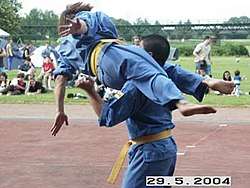
Vietnamese martial arts are highly developed from the country's long history of warfare and attempts to defend itself from foreign occupation. Although most heavily influenced by Chinese martial arts, it has developed its own characteristics throughout the millennia in combination with other influences from its neighbours. Vietnamese martial arts is deeply spiritual due to the influence of Confucianism, Buddhism and Taoism, and is strongly reliant on the "Viet Vo Dao" (philosophy of Vietnamese martial arts). It is probably most famous for its scissor kicks.
The general Vietnamese term for martial arts is "Võ-Thuật." Some of the more popular include:
- Vo Co Truyen Viet Nam (Vo Thuat Co Truyen Viet Nam)
- Vovinam Vietvodao
- Vo Thuat Van Vo Dao
- Vo Thuat Binh Dinh
- Vo Bac Ninh
- Vo Nam Huynh Dao (Master Nam Huynh Dao)
Vietnamese martial arts remains relatively unknown in the world today when compared to its counterparts from China, Japan, Korea or Thailand. However, this is seeing a definite change as schools teaching various styles of Vietnamese martial arts are starting to pop up all over the world, notably in countries such as Spain.
Holidays and other important days
Vietnam celebrates many holidays, including traditional holidays which have been celebrated in Vietnam for thousands of years, along with modern holidays imported predominantly from western countries.
Among the traditional holidays, the two most important and widely celebrated are the Lunar new year (Tết), followed by the Mid-autumn lantern festival (Tết Trung Thu), although the latter has been losing ground in recent years.
Public holidays
| Date | English name | Local name | Remarks |
|---|---|---|---|
| January 1 | New Year's Western New Year's | Tết dương lịch | |
| Between late January–early February | Tết (Lunar New Year) | Tết Nguyên Đán | Largest holiday of the year, falling on the first three days of Lunar calendar; in practice, celebrations are held during the weeks before and after those four days. |
| April 30 | Liberation Day | Ngày miền Nam hoàn toàn giải phóng, và ngày thống nhất Việt Nam. | The day Saigon fell to North Vietnamese forces and Viet Cong forces overthrow South Vietnamese government. and the start of a transition period to the formal reunification of Vietnam |
| May 1 | Labour Day | Ngày Quốc tế Lao động | Celebrates the economic and social achievements of workers. |
| September 2 | National Day National independence Day | Quốc khánh | Commemorates Ho Chi Minh's speech in Ba Dinh Square in 1945, declaring Vietnam's independence |
| 10/3 (lunar) | Hung Vuong Kings Commemoration Day | Ngày Giổ Tổ Hùng Vương |
Other holidays
| Date | English name | Local name |
|---|---|---|
| March 8 | International Women's Day | Quốc tế Phụ nữ |
| October 20 | Vietnam Women's Day | Ngày Phụ nữ Việt Nam |
| November 20 | Teachers' Day | Ngày Nhà giáo Việt Nam |
| December 25 | Christmas | Giáng sinh/Nôen |
| June 1 | Children's day | Tết thiếu nhi |
| 15/1 (lunar) | Full moon of the 1st month | Rằm tháng giêng |
| 3/3 (lunar) | Third lunar month's third day's festival | Tết Hàn thực |
| 15/4 (lunar) | Buddha's Birthday | Lễ Phật Đản |
| 5/5 (lunar) | Midyear Festival | Tết Đoan ngọ |
| 15/7 (lunar) | Full moon of the 7th month or Piety Day | Rằm tháng bảy hoặc Lễ Vu Lan |
| 15/8 (lunar) | Mid-Autumn Festival | Tết Trung thu |
| 23/12 (lunar) | Kitchen guardians | Ông Táo chầu trời |
World and intangible cultural heritage
Vietnam has a number of UNESCO-listed World Heritage Sites, as well as cultural relics deemed as intangible heritage. These are split into specific categories:
Cultural heritage sites
- Hội An: An ancient city and trading center.
- Imperial city of Huế: Complex of monuments in the former imperial capital.
- Mỹ Sơn: Ancient temple complex of the former Champa civilization in Quảng Nam Province.
Natural heritage sites
- Phong Nha Cave located in Quảng Bình Province
- Hạ Long Bay
Intangible cultural heritage
- Nhã nhạc: a form of Vietnamese court music
- Cải lương: Southern Vietnam-styled opera
- Space of gong culture
- Ca trù
- Quan họ
There are a number of other potential world heritage sites, as well as intangible cultural heritage which Vietnam has completed documents on for UNESCO's recognition in the future.
See also
- History of Vietnam
- Censorship in Vietnam
- Communications in Vietnam
- Media of Vietnam
- List of museums in Vietnam
- Politics of Vietnam
- Vietnamese name
- Vietnamese language
- Baiyue
- Vietnamese studies
- Lingnan culture
- Military history of Vietnam
- Tourism in Vietnam
References
- "Mission Atlas Project: VIETNAM" (PDF). web.archive.org. 2012-09-15. Retrieved 2020-06-06.
- Embassy of Vietnam in the United States of America. "Evolution of culture". Archived from the original on August 9, 2011. Retrieved 2010-05-16.
- Liu, Dang; Duong, Nguyen Thuy; Ton, Nguyen Dang; Phong, Nguyen Van; Pakendorf, Brigitte; Hai, Nong Van; Stoneking, Mark (2019-11-28). "Extensive ethnolinguistic diversity in Vietnam reflects multiple sources of genetic diversity". bioRxiv: 857367. doi:10.1101/857367.
- "Cultural evolution in Vietnam's early 20th century: a Bayesian networks analysis of Franco-Chinese house designs". January 26, 2019. doi:10.31235/osf.io/7p9zf. Retrieved January 27, 2019. Cite journal requires
|journal=(help) - Peter C. Phan (2005). Vietnamese-American Catholics. Ethnic American pastoral spirituality series. Paulist Press. ISBN 0-8091-4352-6.
- "Religious fusion in Vietnam". www.insightguides.com. Retrieved 2017-09-15.
- "The World Factbook — Central Intelligence Agency". www.cia.gov. Retrieved 2017-03-09.
- "'Cultural additivity' and how the values and norms of Confucianism, Buddhism, and Taoism co-exist, interact, and influence Vietnamese society: A Bayesian analysis of long-standing folktales, using R and Stan". WUH-ISR Working Paper 1801 (Centre for Interdisciplinary Social Research). March 4, 2018. Retrieved March 12, 2018.
- Nguyen Ngoc Bich (1975). A Thousand Years of Vietnamese Poetry. New York: Alfred A. Knopf. ISBN 0-394-49472-5.
- Durand, Maurice M.; Nguyen Tran Huan (1985) [1969]. An Introduction to Vietnamese Literature. Translated by D. M. Hawke. New York: Columbia University Press. p. 7. ISBN 0-231-05852-7.
- corneliatrent (2018-01-10). "The Poetry of Vietnam". corneliatrent. Retrieved 2019-11-13.
- Thuyên, Nhã. "(Un)contextualizing Underground Poetry: Reimagining a Critical Community". Words Without Borders. Retrieved 2019-11-13.
- Chattarji, Subarno (2001). Memories of a Lost War: American Poetic Responses to the Vietnam War. Clarendon Press. ISBN 9780199247110.
- Jamieson, Neil (December 2001). "Some Things Poetry Can Tell Us about the Process of Social Change in Vietnam" (PDF). Southeast Asian Studies. Vol. 39.
- Art of Vietnam
- Forbes, Andrew, and Henley, David: Vietnam Past and Present: The North (History and culture of Hanoi and Tonkin). Chiang Mai. Cognoscenti Books, 2012. ASIN: B006DCCM9Q.
- Stephanie, Fahey (2007). "Intercultural Communication Between Australia & Vietnam." Society and Culture Association. University of Sydney.
- "Nonverbal". Retrieved 22 November 2015.
- "Communication/Values". Retrieved 22 November 2015.
- "Communicating with Vietnamese people". Retrieved 22 November 2015.
- Bulletin of the Indo-Pacific Prehistory Association, Issue 15. Indo-Pacific Prehistory Association. 1996. p. 94.
- Indo-Pacific Prehistory Association. Congress (1996). Indo-Pacific Prehistory: The Chiang Mai Papers, Volume 2. Bulletin of the Indo-Pacific Prehistory Association. Volume 2 of Indo-Pacific Prehistory: Proceedings of the 15th Congress of the Indo-Pacific Prehistory Association, Chiang Mai, Thailand, 5-12 January 1994. The Chiang Mai Papers. Indo-Pacific Prehistory Association, Australian National University. p. 94.
- The Vietnam Review: VR., Volume 3. Vietnam Review. 1997. p. 35.
- Baldanza, Kathlene (2016). Ming China and Vietnam: Negotiating Borders in Early Modern Asia. Cambridge University Press. p. 110. ISBN 1316531317.
- Dutton, George; Werner, Jayne; Whitmore, John K., eds. (2012). Sources of Vietnamese Tradition. Introduction to Asian Civilizations (illustrated ed.). Columbia University Press. p. 87. ISBN 0231511108.
- Chanda, Nayan (1986). Brother Enemy: The War After the War (illustrated ed.). Harcourt Brace Jovanovich. pp. 53, 111.
- Chandler, David (2018). A History of Cambodia (4 ed.). Routledge. p. 153. ISBN 0429964064.
- Choi, Byung Wook (2018). Southern Vietnam under the Reign of Minh Mang (1820–1841): Central Policies and Local Response. Book collections on Project MUSE (illustrated ed.). Cornell University Press. p. 39. ISBN 1501719521.
- Vu, Thuy (2014), "Đi tìm ngàn năm áo mũ", Tuoi Tre, archived from the original on June 17, 2015, retrieved June 16, 2015
- Unknown, T.Van (2013), "Ancient costumes of Vietnamese people", Vietnamnet, retrieved June 16, 2015
- Nguyễn Khắc Thuần (2005), Danh tướng Việt Nam, Nhà Xuất bản Giáo dục.
External links
- Viettouch. This site is dedicated to the promotion of Vietnamese history and culture; see reviews of the site.
- MyVietnamHandbook.com. This site contains articles discussing many aspects of Vietnamese culture such as clothing, festival and provides guides and tips for travelling to Vietnam and understanding the culture of Vietnam.
- Vietnamese Culture
- Vietnamese culture and society. Embassy of Vietnam in the USA.
- Vietnamese Culture and History. Vietspring.org.
- Vietnam Cultural Profile
- Vietnamese Culture and Traditions
- Vietnamese Poetry
- Vietnamese Culture and Traditions
- Vietnamese culture index – Vietnam Online
- Vietnam in photo

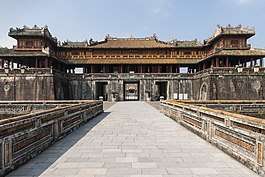
.jpg)


